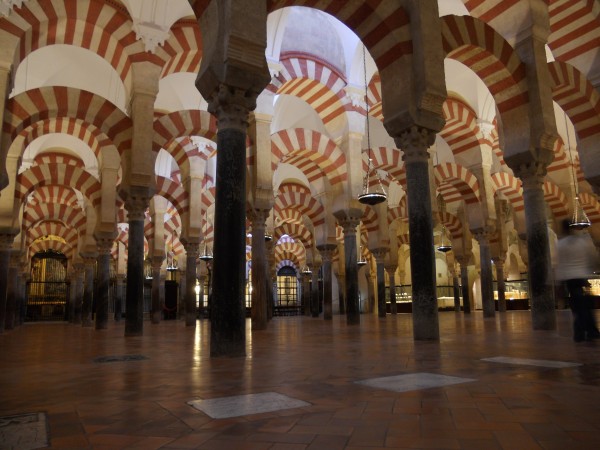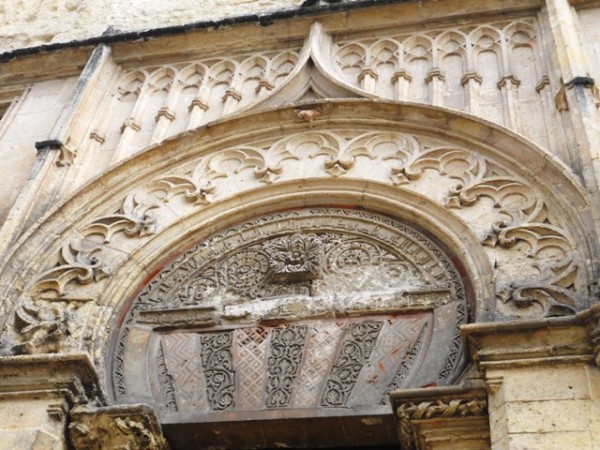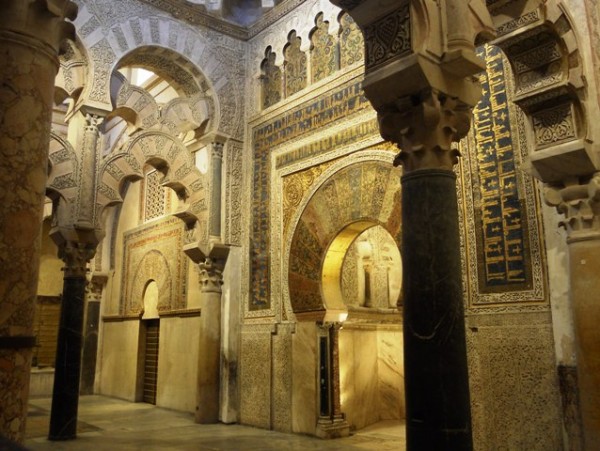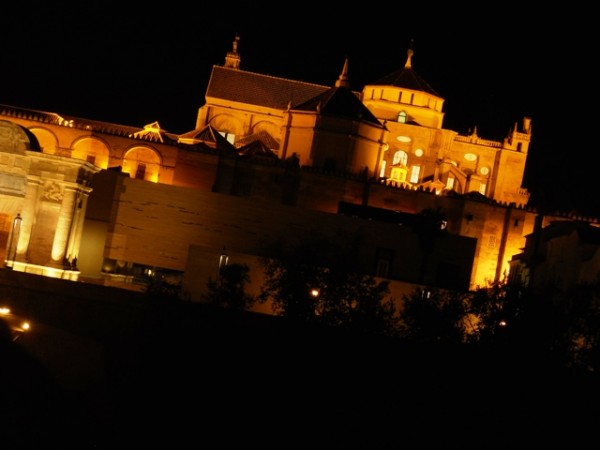As grand buildings in Europe go, the Mezquita of Cordoba is right up there with the best of them. The site on which the building stands was originally home to a pagan temple, which then became a church, then a mosque before being becoming a church again in the 13th century. The fact that it is still commonly referred to locally as La Mezquita, despite the uncompromising presence of the grand Christian cathedral at its inner core, is a clear nod to the most influential period in the development of this architectural marvel.
Whether you choose to view the mezquita of Cordoba as a symbol of religious tolerance or intolerance depends very much on which parts of the city’s old history you choose to dwell. On the one hand the building grew up during long periods when the Christian, Muslim and Jewish populations of Andalucia lived side by side in relative peace. Cordoba thrived as the intellectual capital of western Mediterranean with the cathedral/mosque at its heart. On the other hand it is a reminder of the centuries of bloody struggle for Mediterranean dominance between Christians and Muslims. Even in recent years Spanish Muslims have requested permission to pray within the building, without success.
While it’s impossible to appreciate the full significance of the mezquita of Cordoba without taking the time to learn about its history, the sight of the building alone is guaranteed to stay in the memory of all who visit. There are three ways to experience the mezquita, so it’s worth planning your visit depending on how you want to see it.
Day Tour (€8) – this is the most common way to visit, with a standard admission ticket available most days between 10am and 6pm (7pm in the summer months). Sundays and religious have restricted visiting hours so check ahead if you’re likely to visit at these times. An audio guide is available that will provide a bit of context to the building’s many architectural features.
Day Tour (free) – yes, you can visit the mezquita without paying an admission fee, every morning apart from Sundays and feast days, between 8.30 and 10.00. The only area off-limits at this time is the main church in the centre, but you’ll get close enough to see most of this as well. Arrive at 8.30 and you’ll have the chance to wander through the rows of arches without the crowds and capture your photos in peace. No audio guide is available at this time.
Night tour (€18) – the most expensive option by far, the night tours take groups of around 100 visitors at a time on a multi-lingual audio-guided tour of the mezquita. Tour times depend on the time of year, with later tours in the summer months. After a short introductory film telling the story of how the building expanded to its current size and shape, visitors are ushered through the mezquita with lighting within the building cleverly used to reveal features as they are described in the headset commentary.
We explored the mezquita for free in the early morning and returned at 9.30pm for the night visit. It’s perhaps a good idea to visit first in the daytime and then return at night, as you can get all the photos you want on your first visit and then put your camera away and enjoy the building with your own eyes (no photography is allowed on the night tour).
Website for the Cathedral/Mezquita of Cordoba: http://www.catedraldecordoba.es/index.asp









Impressive isn’t it, Andy? I’d seen the photographs, of course, but never experienced an atmosphere quite like it. We were there early morning. I hadn’t realised there was a night tour but by that stage of the day we were snuggled up in one of Cordoba’s delightful patio restaurants.
Ah yes, the patio restaurants are lovely aren’t they? Same goes for the tea houses – a nice way to while away a cool autumn evening
I think I would like a night time tour of the Mezquita better. Are there any rumors surrounding the Mezquita regarding ghost occurences?
I haven’t heard of those Alex – but who knows? With over 1000 years of history a ghost story or two wouldn’t surprise me…